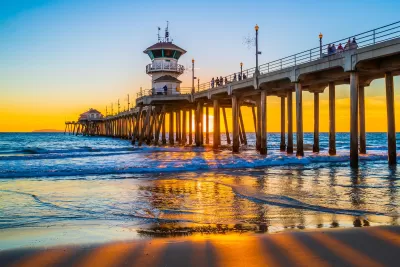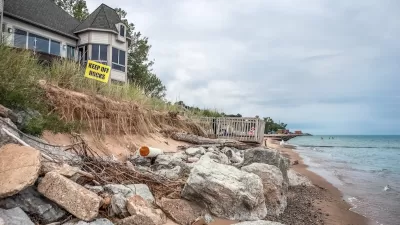California’s aging piers face growing threats from climate change, with intensifying storms, rising repair costs, and structural vulnerabilities forcing tough decisions about their future preservation.

California’s iconic piers, symbols of coastal culture and history, are increasingly imperiled by climate change. As reported by Noah Haggerty, recent storms, including those that severely damaged Santa Cruz Wharf and Ocean Beach Pier, have highlighted the vulnerabilities of these aging structures to intensifying storm patterns, rising sea levels, and unpredictable weather events. Despite ongoing efforts to reinforce piers with structural upgrades, the challenges of climate change are outpacing these interventions. Scientists warn that shifts in storm direction, fueled by warming temperatures, are striking even sheltered piers, creating an urgent need for strategic planning and resource allocation to preserve these landmarks.
The costs of maintaining and upgrading piers are steep, with repairs often running into millions of dollars and leaving piers closed for years. Santa Cruz Wharf, for example, faced delays due to lawsuits over environmental impact reports, while interim repairs began too late to prevent further damage from extreme storms. Similarly, San Diego’s Ocean Beach Pier has been deemed irreparable, necessitating an $8 million replacement project. Many other piers, such as the Ventura Pier, have required substantial restoration following storm-induced damage, and some, like Seacliff State Beach Pier, have been removed entirely after severe deterioration.
California’s coastal piers are at a crossroads. Most were built over a century ago, originally designed for calmer seas and different purposes. While they now serve as cultural and recreational hubs, the question of their future looms large. With limited resources, officials must make tough decisions about which piers to protect and how to adapt to the changing climate. As Patrick Barnard of the U.S. Geological Survey notes, strategic prioritization will be key as the state grapples with the growing impacts of climate change on its historic coastal infrastructure.
FULL STORY: California’s piers may not be able to withstand climate change

Study: Maui’s Plan to Convert Vacation Rentals to Long-Term Housing Could Cause Nearly $1 Billion Economic Loss
The plan would reduce visitor accommodation by 25,% resulting in 1,900 jobs lost.

Placekeeping: Setting a New Precedent for City Planners
How a preservation-based approach to redevelopment and urban design can prevent displacement and honor legacy communities.

North Texas Transit Leaders Tout Benefits of TOD for Growing Region
At a summit focused on transit-oriented development, policymakers discussed how North Texas’ expanded light rail system can serve as a tool for economic growth.

Washington State Plans Ambitious ‘Cycle Highway’ Network
The state is directing funding to close gaps in its existing bike network and make long-distance trips more accessible.

Homeowners Blame PG&E for Delays in ADU Permits
The utility says it has dramatically reduced its backlog, but applicants say they still face months-long delays for approvals for new electrical work.

Rethinking Wildfire Defense: How a Landscape Approach Can Protect Neighborhoods
Post-fire analysis of the Eaton Fire reveals that a landscape approach — including fire-resistant vegetation, home hardening, and strategic planning — can help reduce wildfire risk, challenging assumptions that trees and plants are primary fire hazards.
Urban Design for Planners 1: Software Tools
This six-course series explores essential urban design concepts using open source software and equips planners with the tools they need to participate fully in the urban design process.
Planning for Universal Design
Learn the tools for implementing Universal Design in planning regulations.
Borough of Carlisle
Caltrans
Heyer Gruel & Associates PA
Institute for Housing and Urban Development Studies (IHS)
City of Grandview
Harvard GSD Executive Education
Salt Lake City
NYU Wagner Graduate School of Public Service
City of Cambridge, Maryland





























